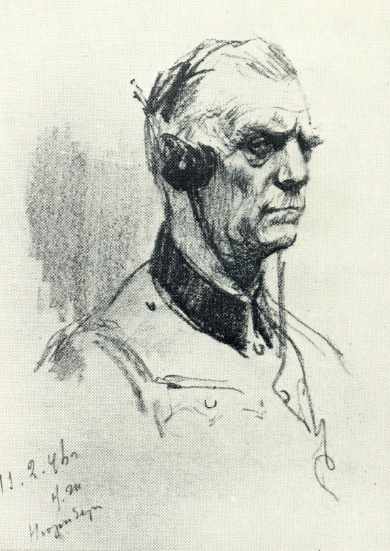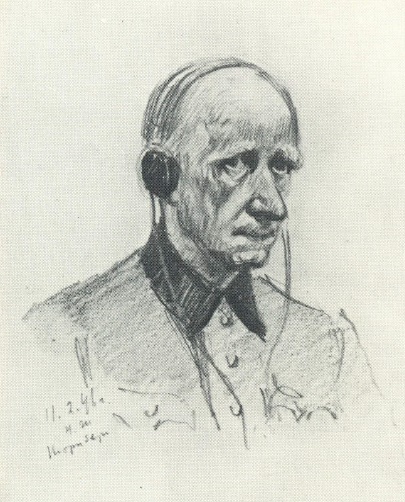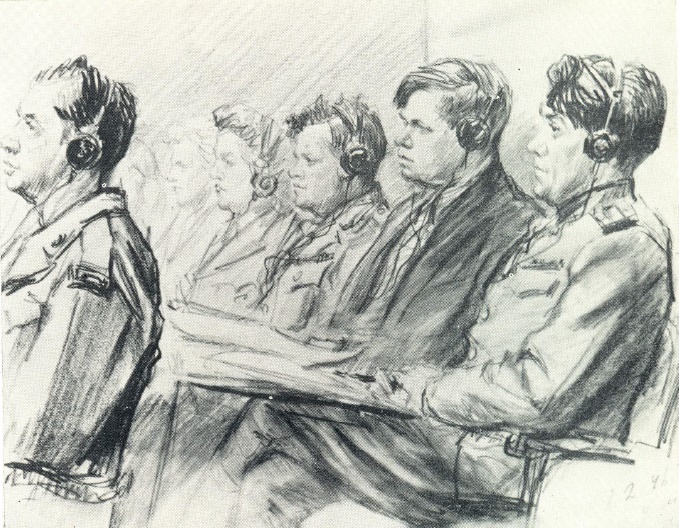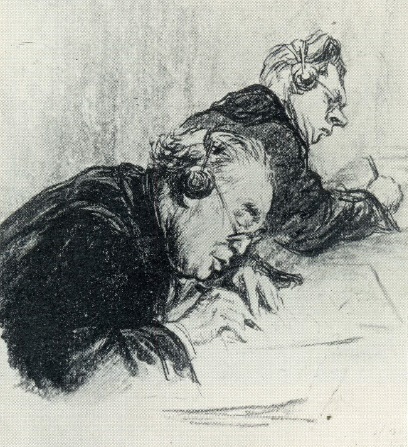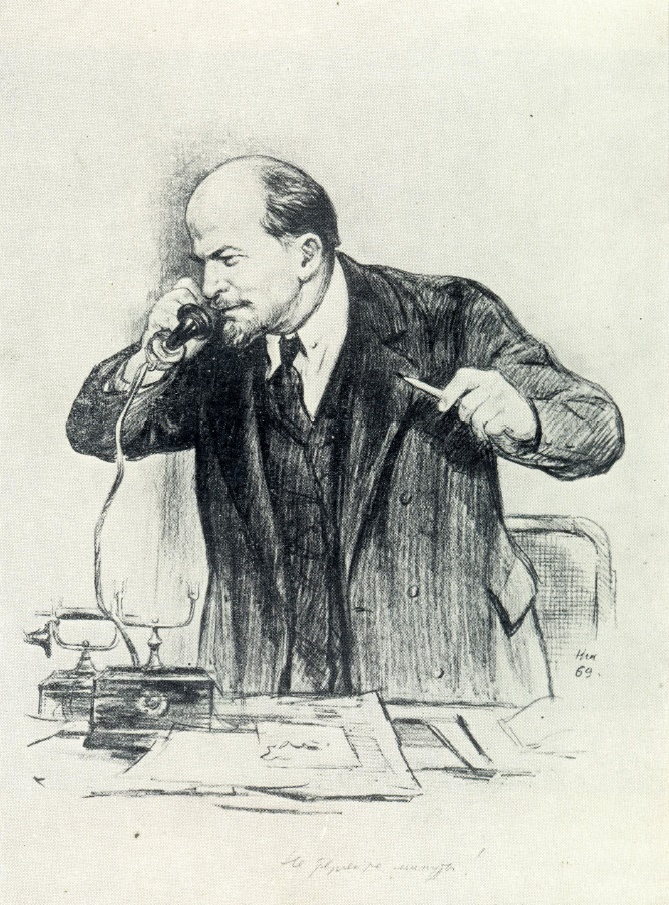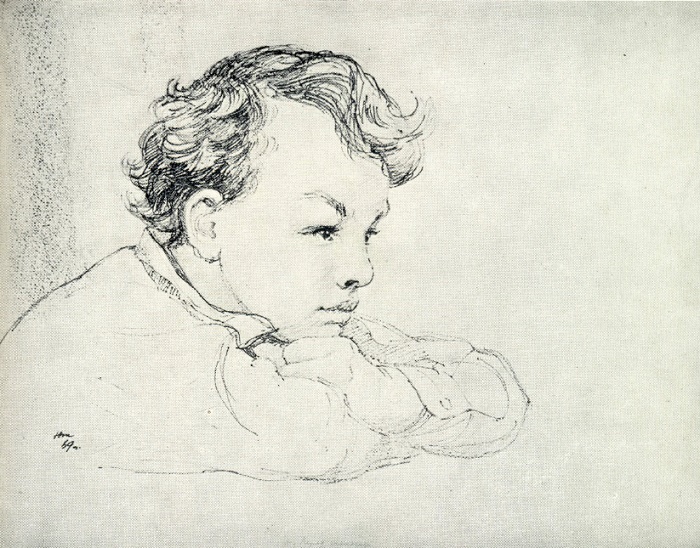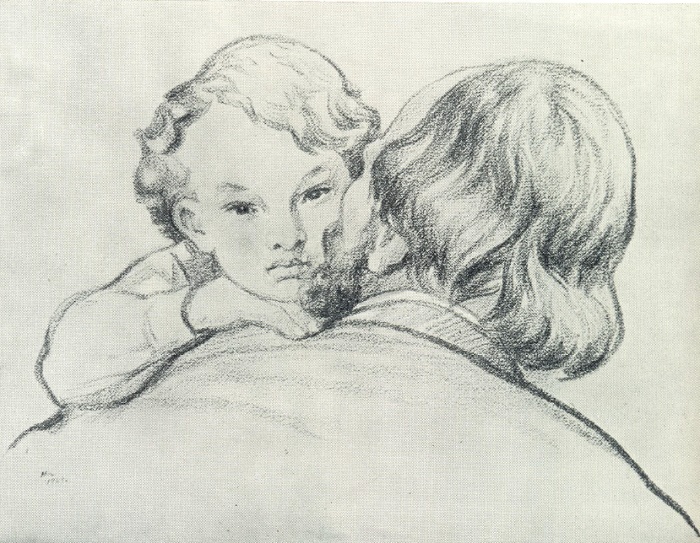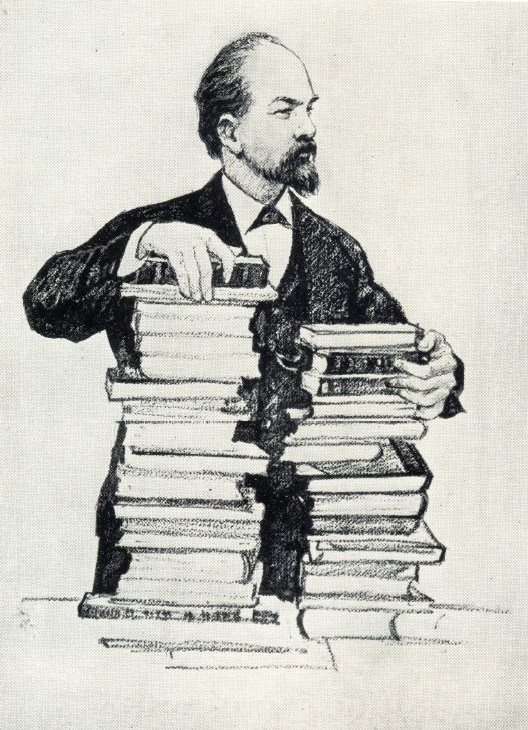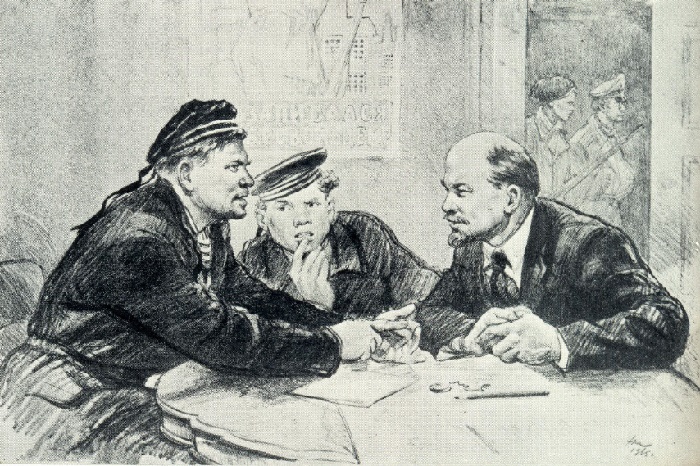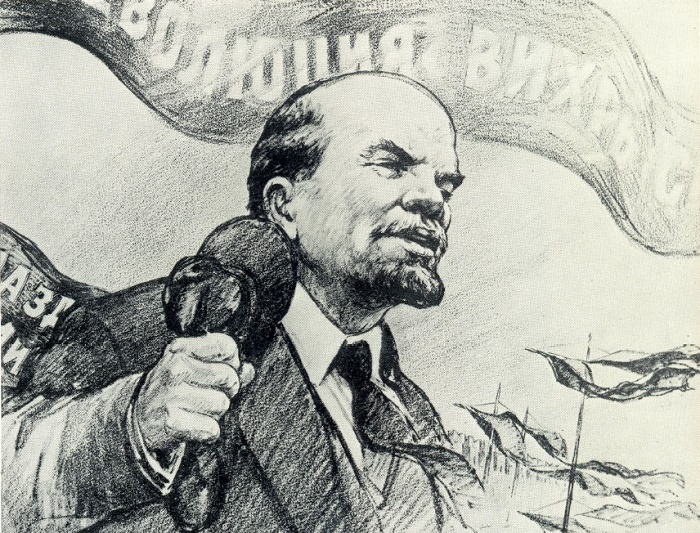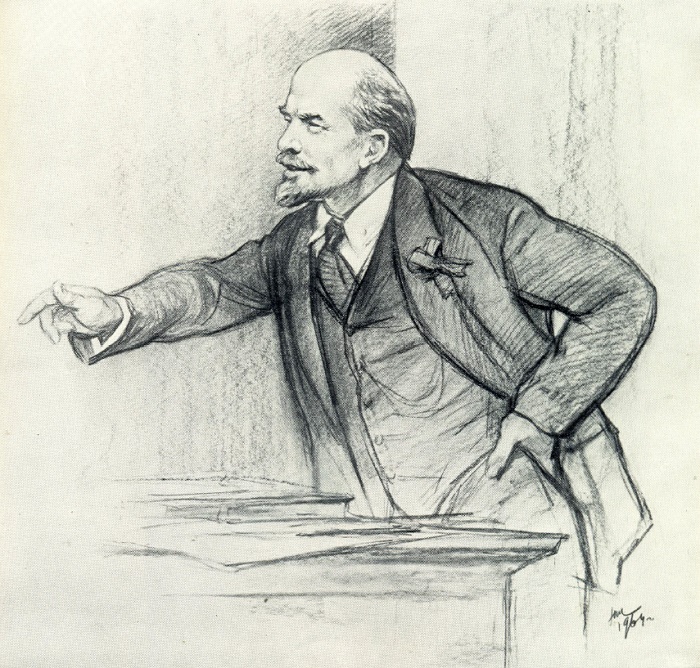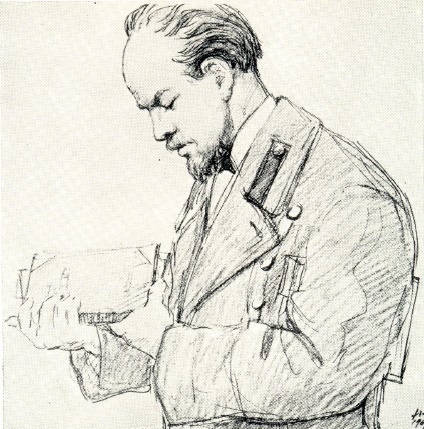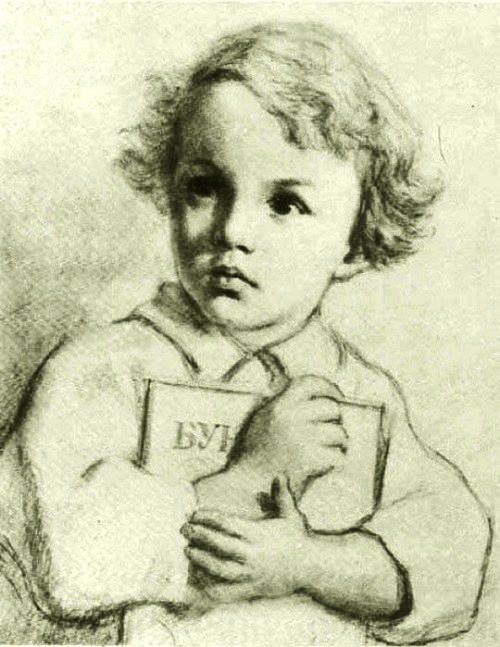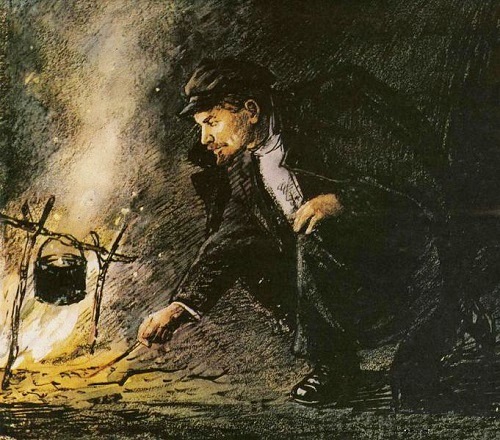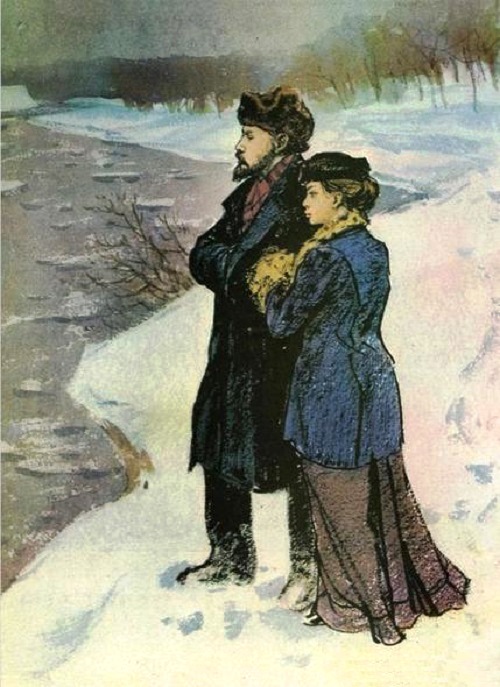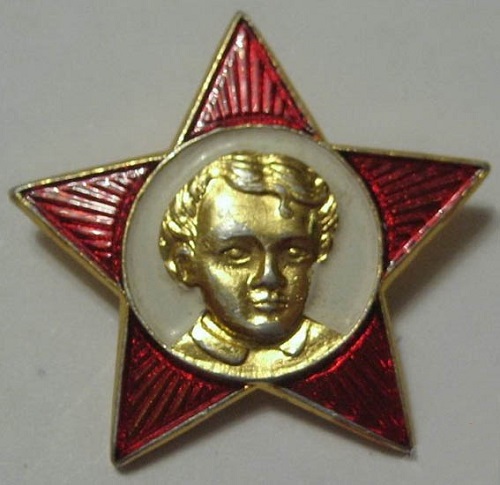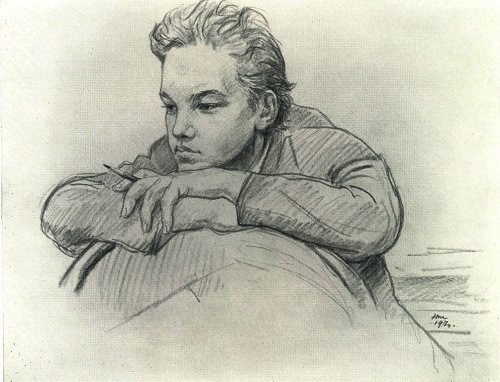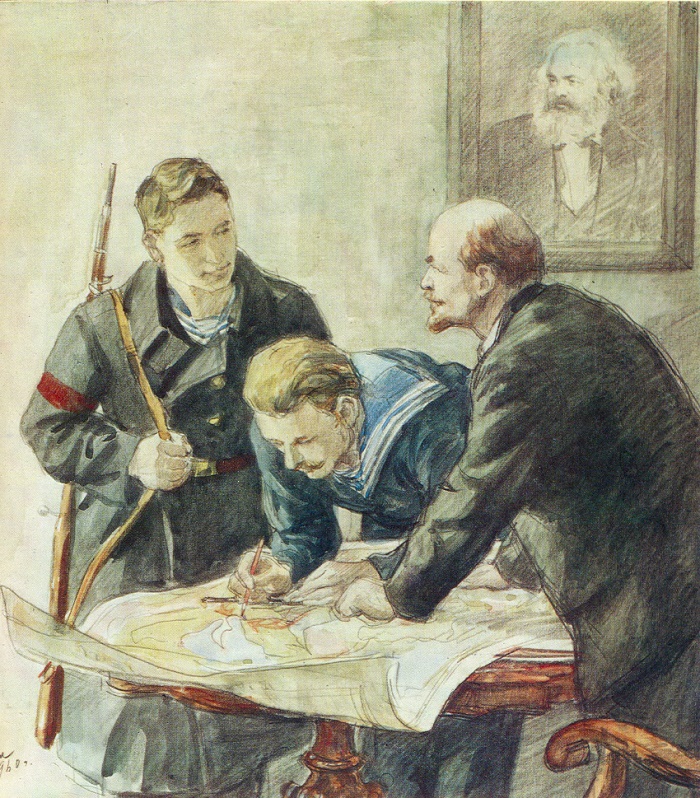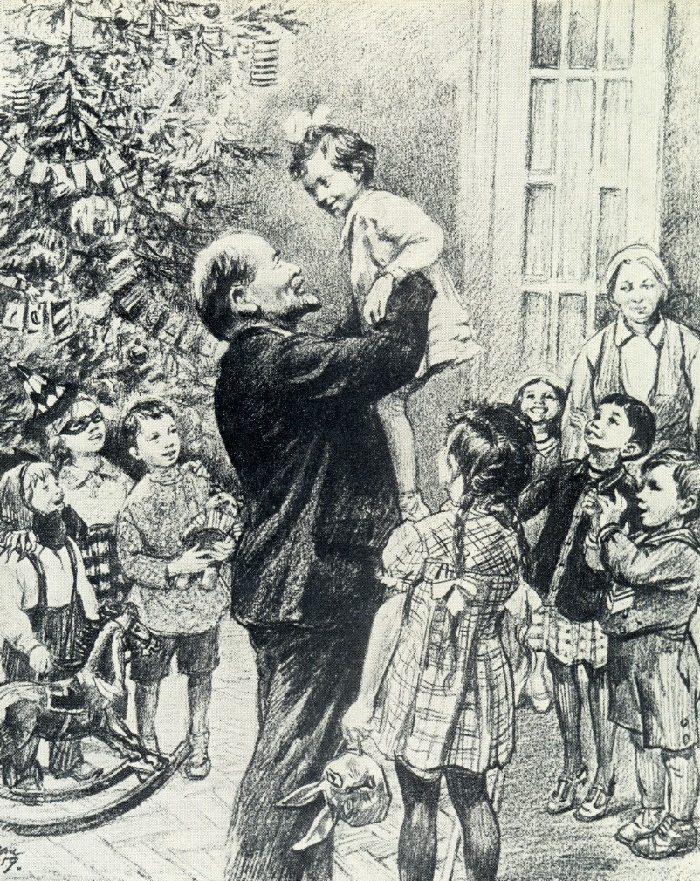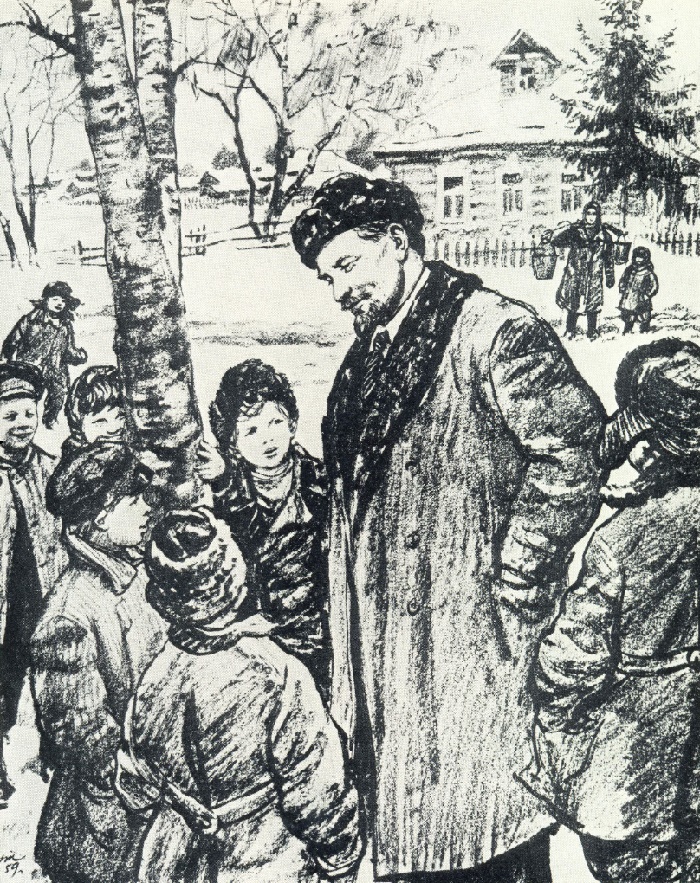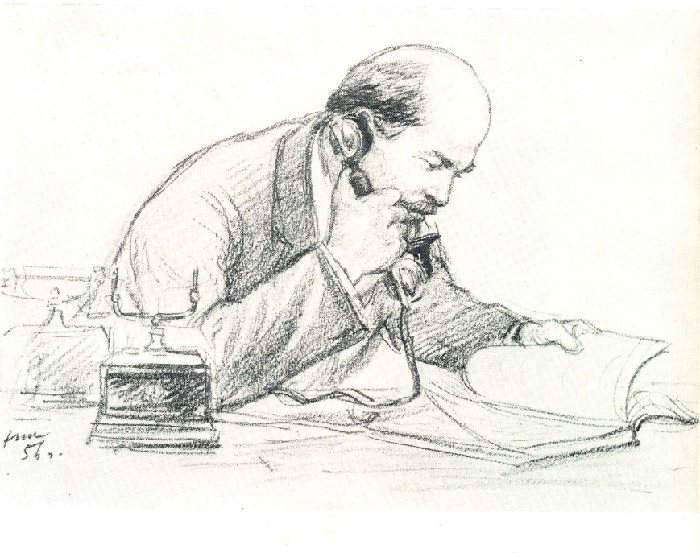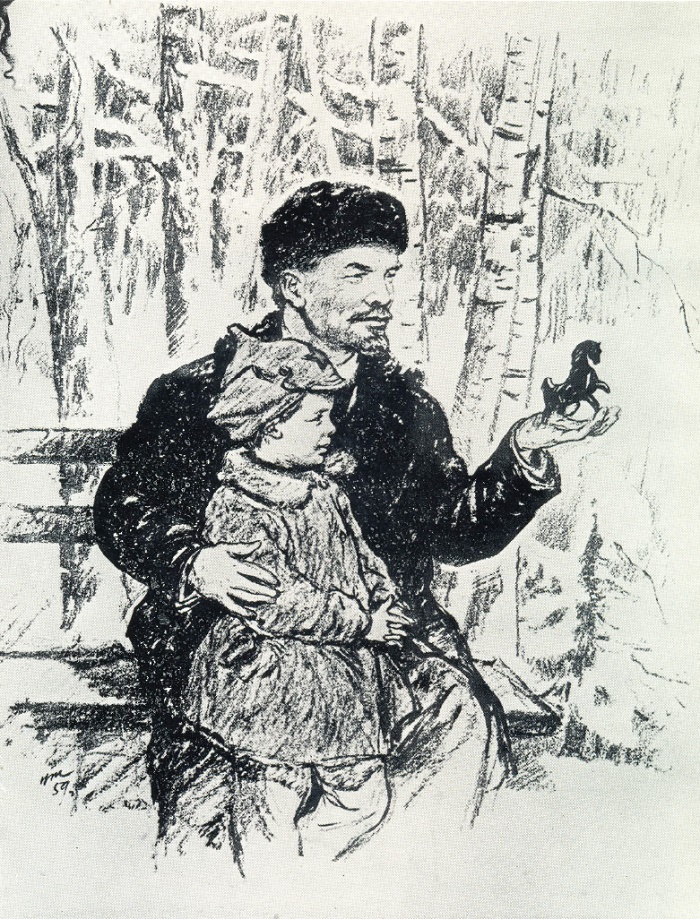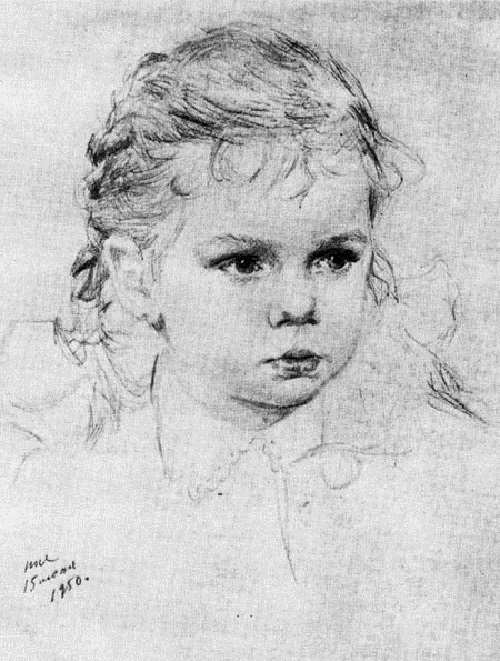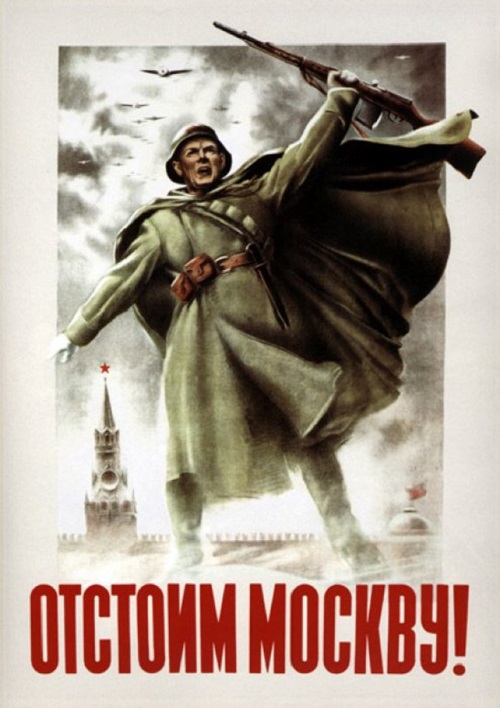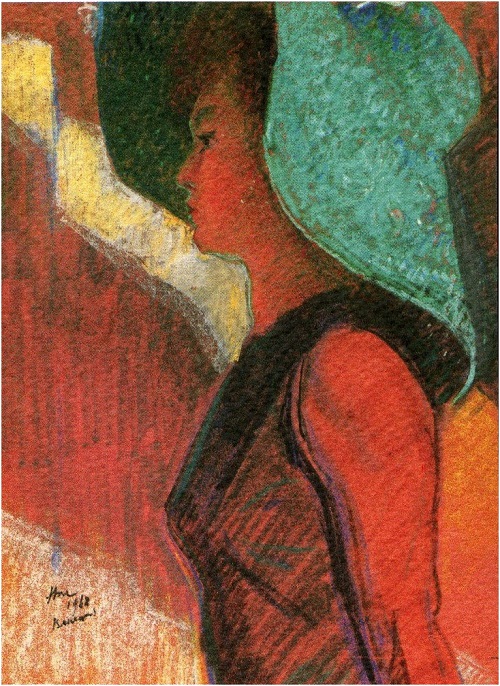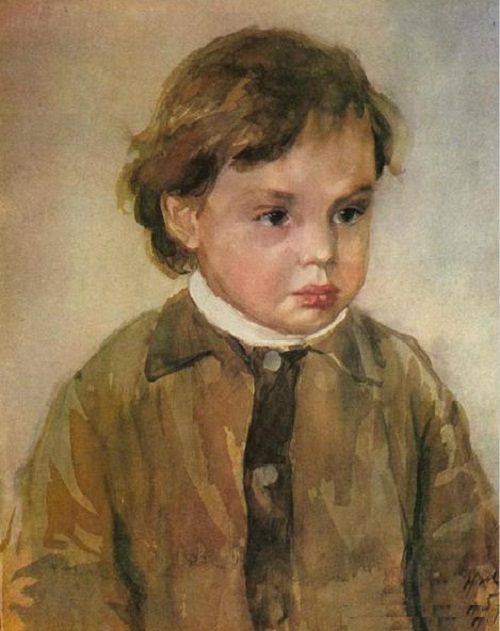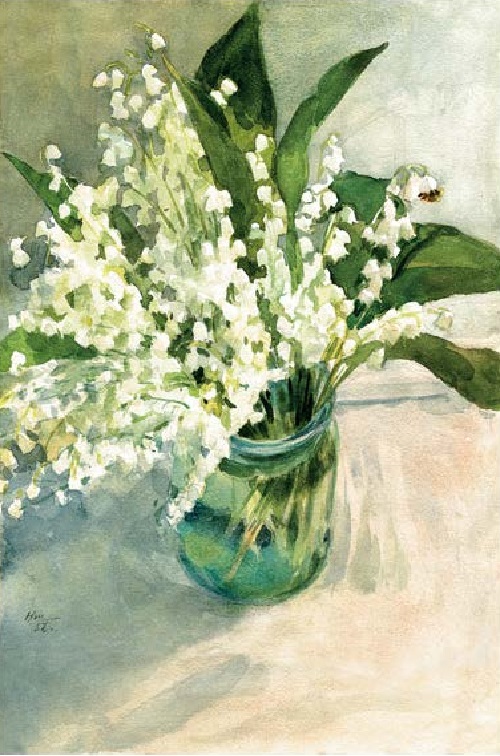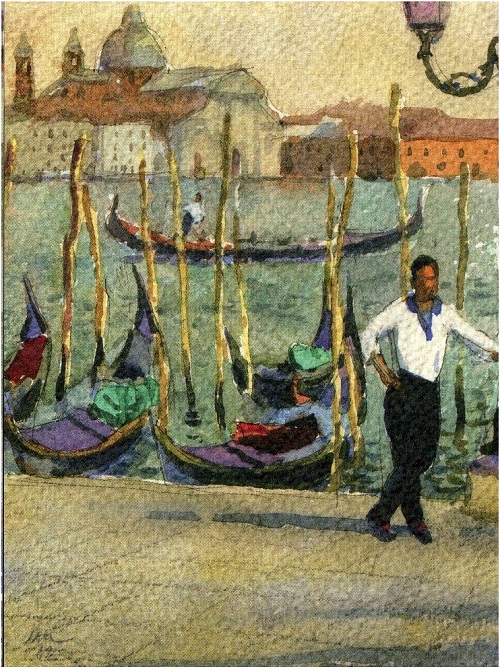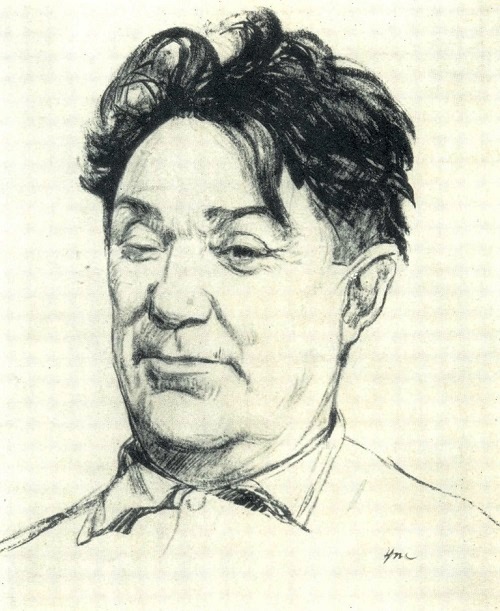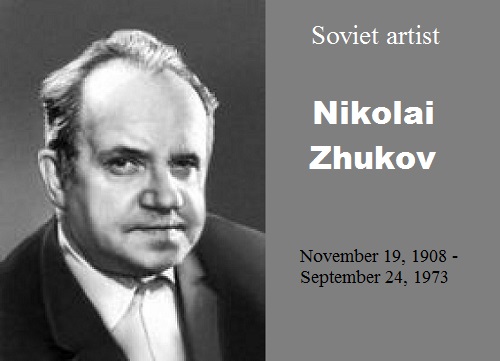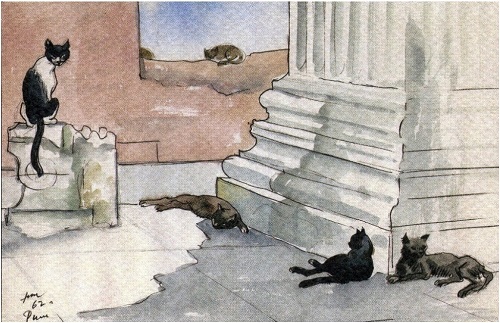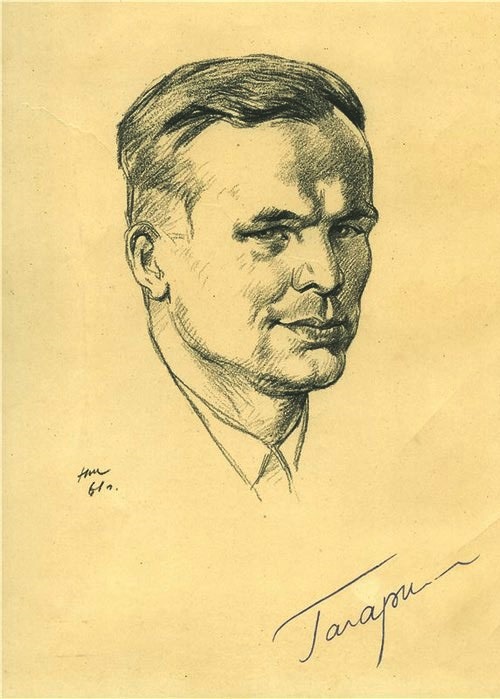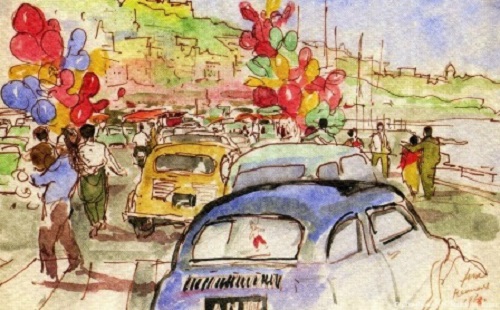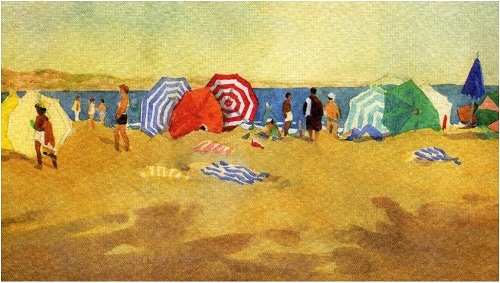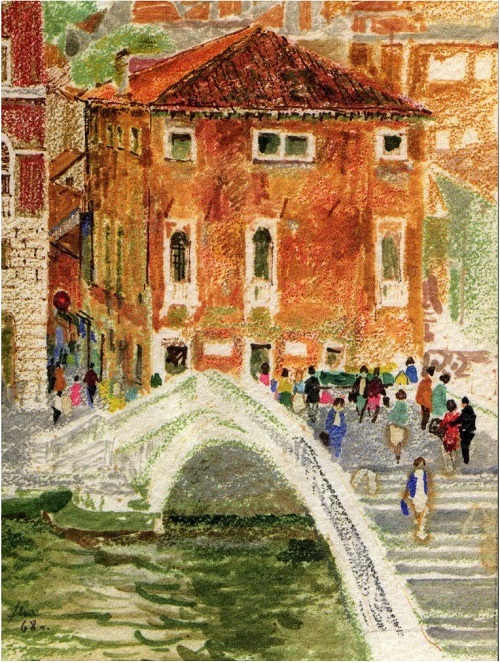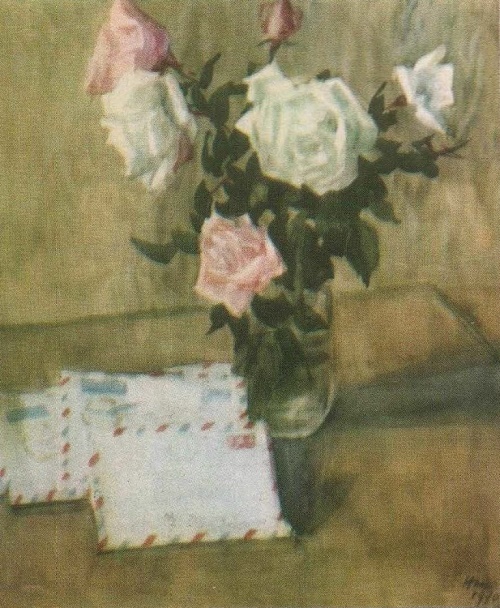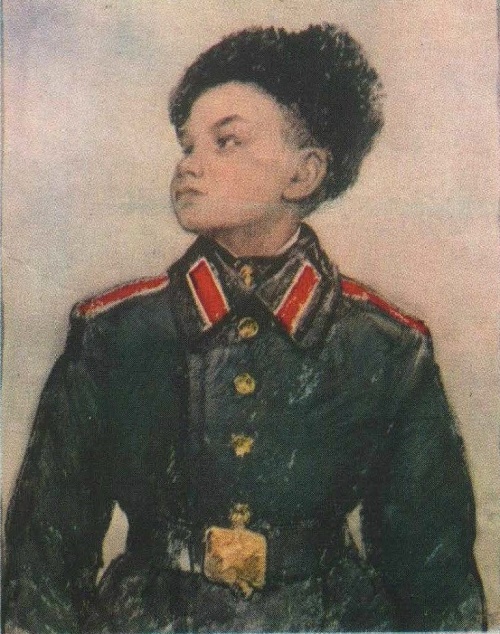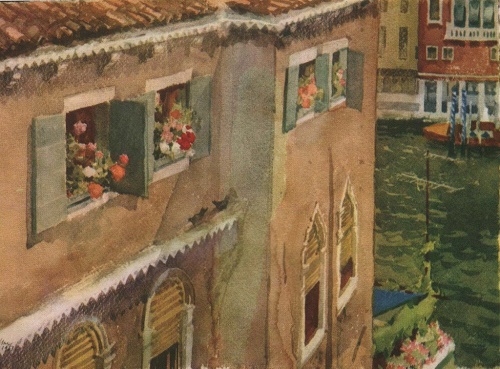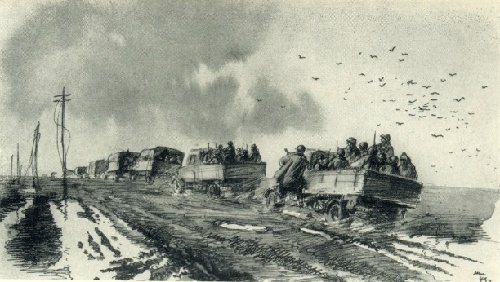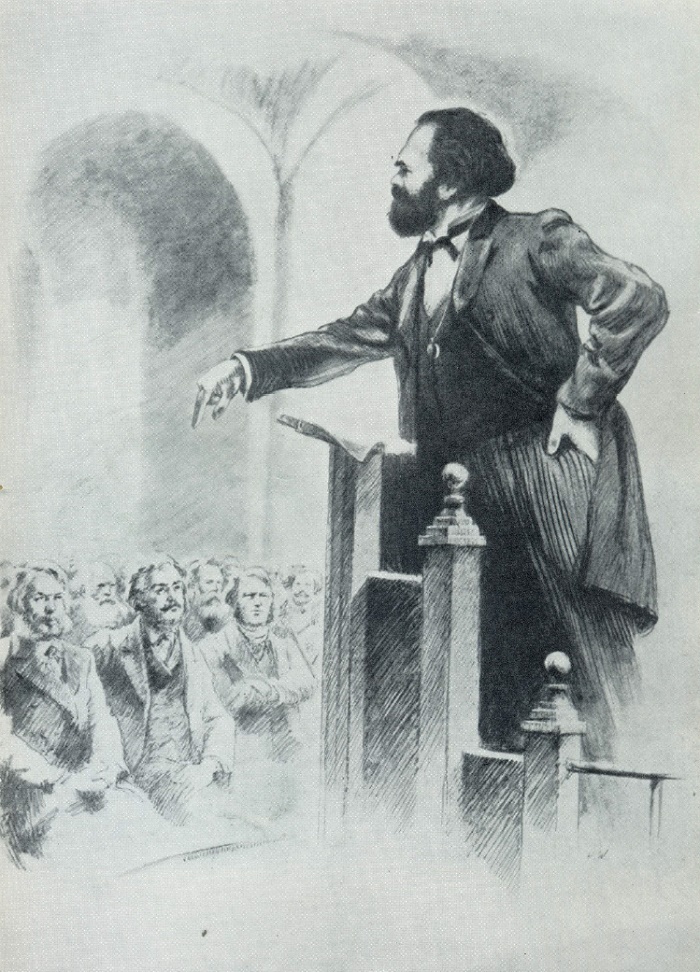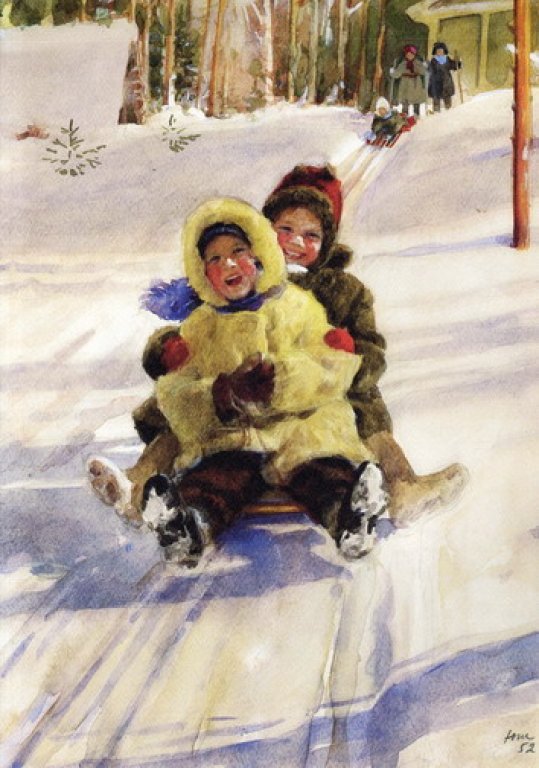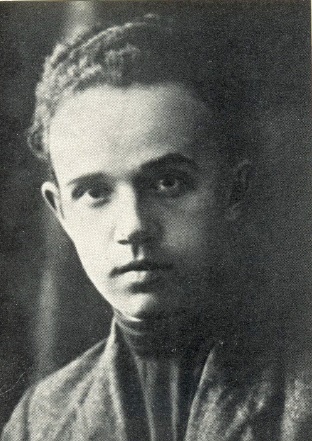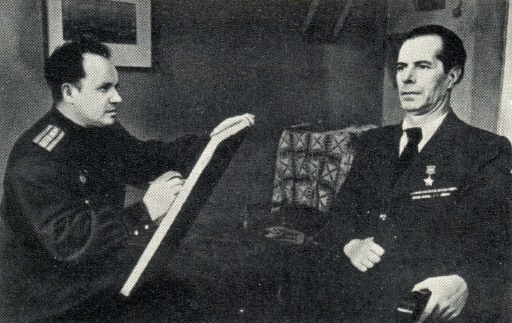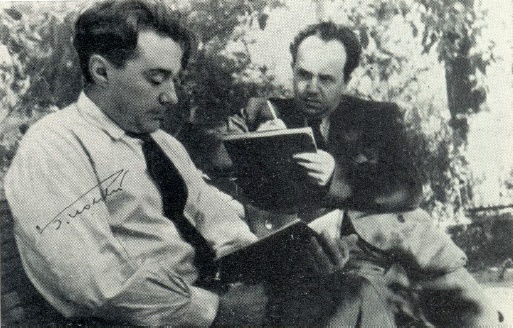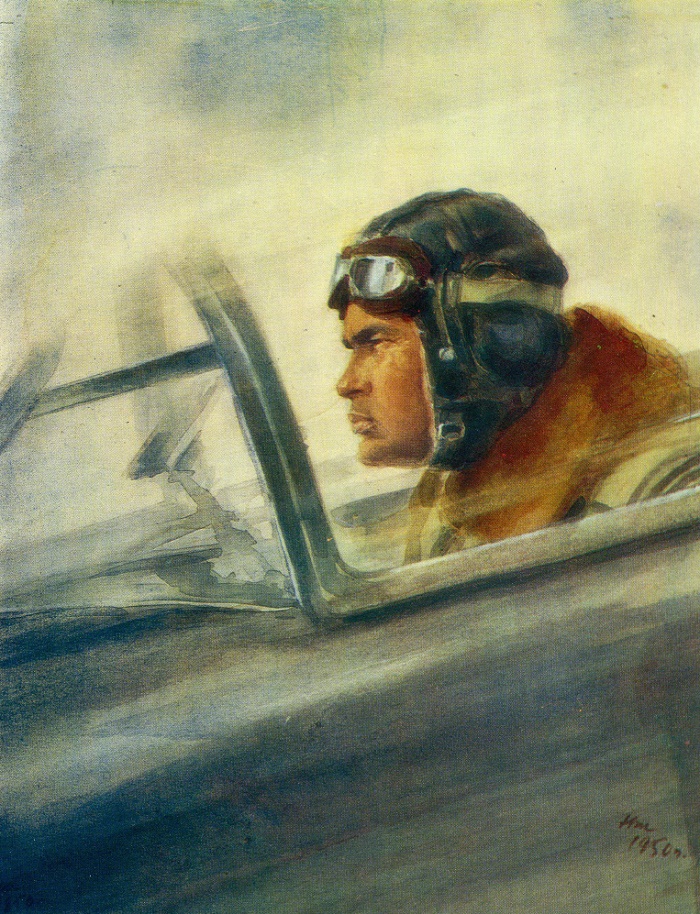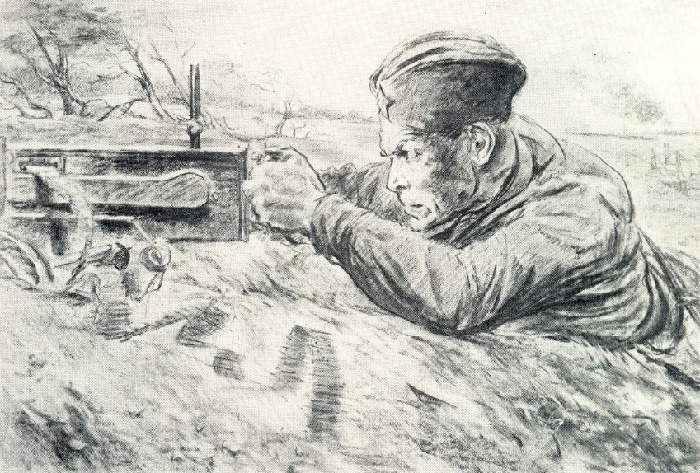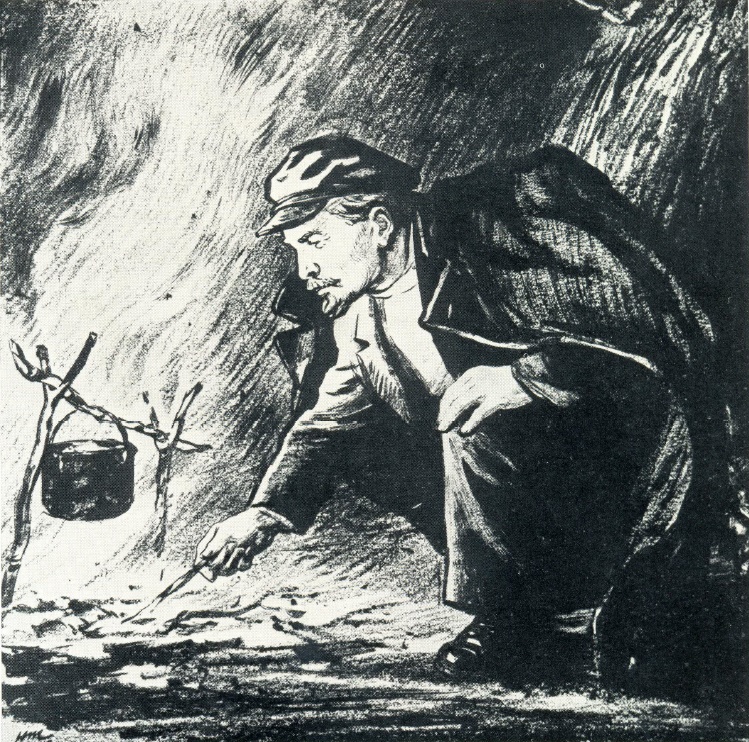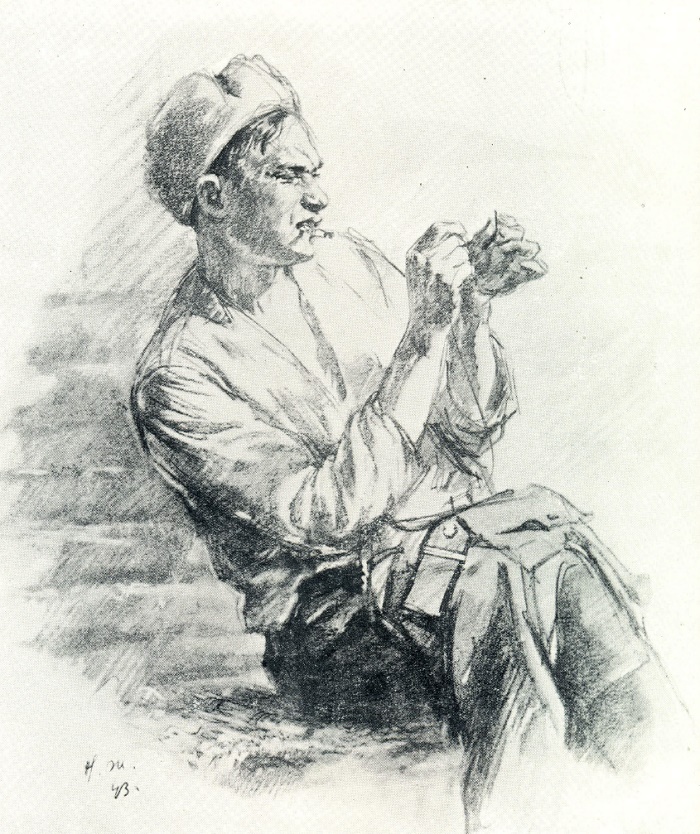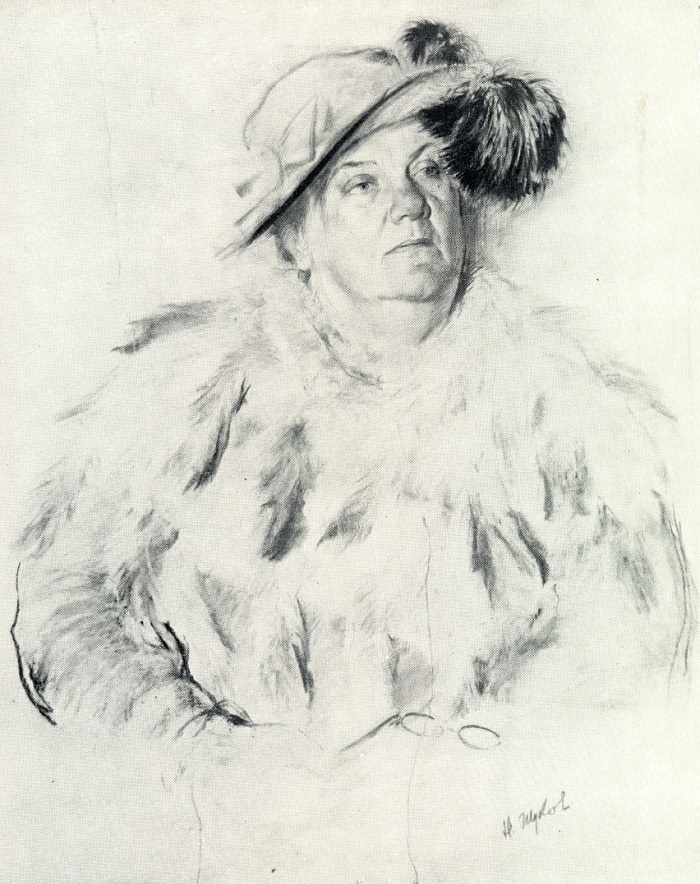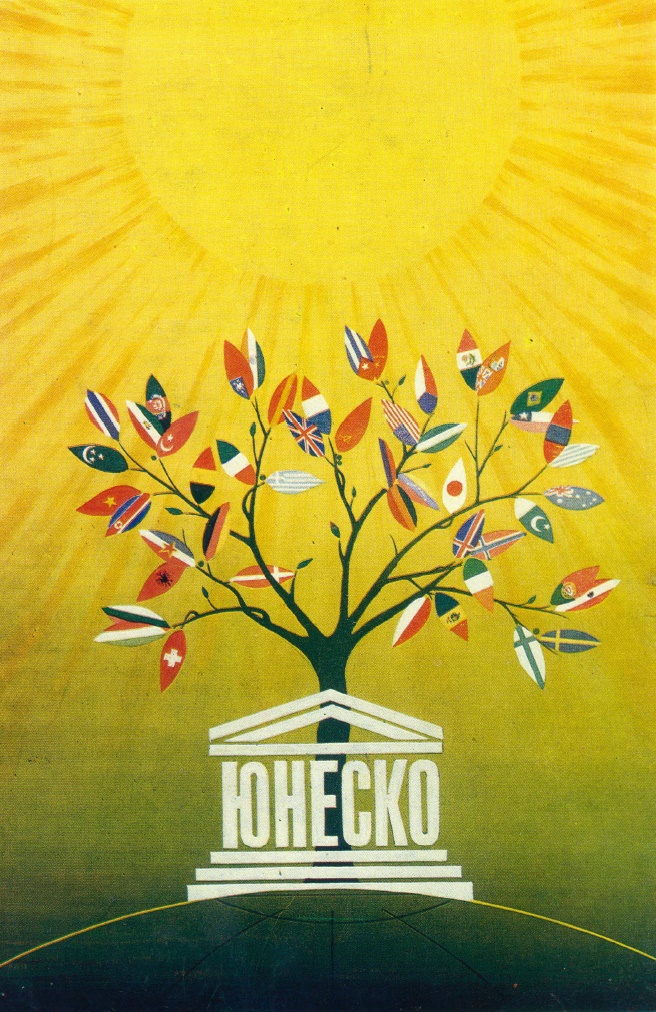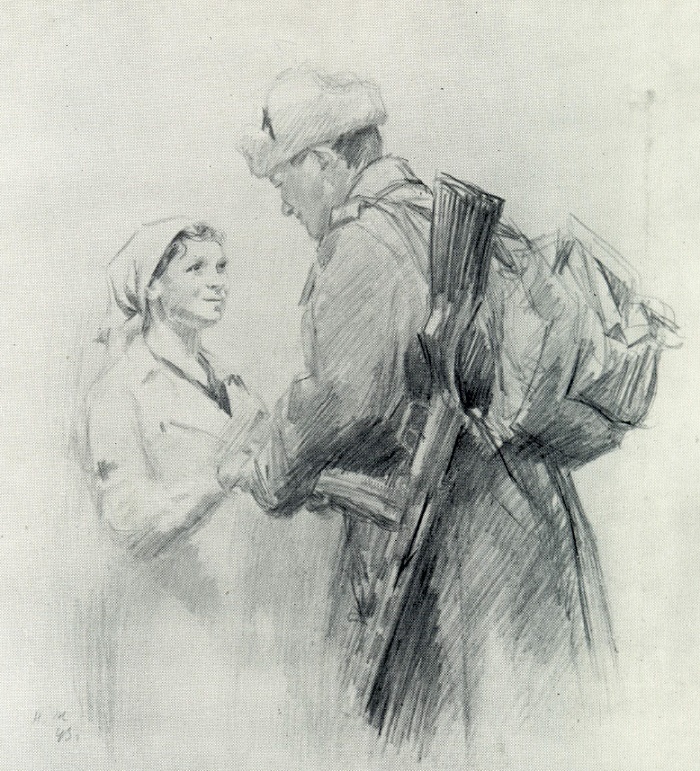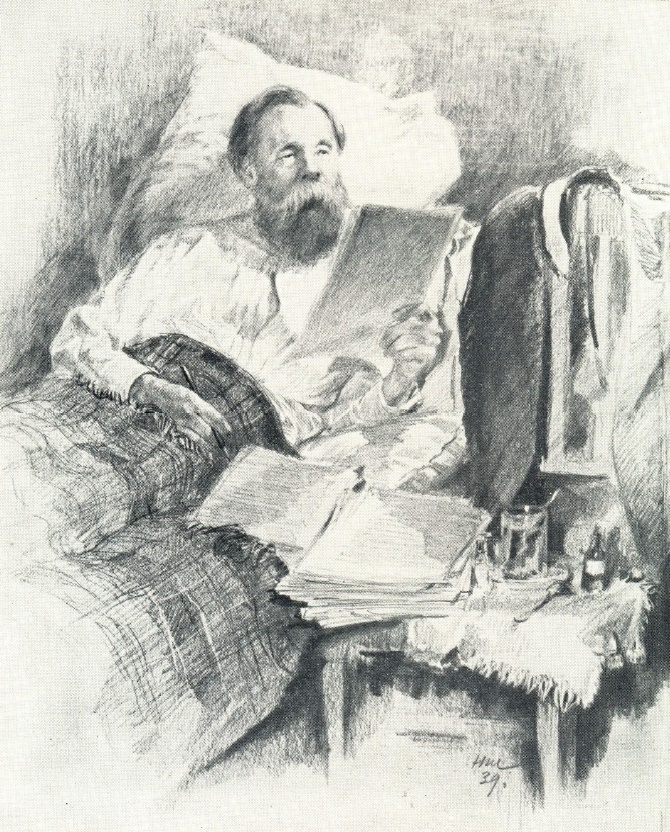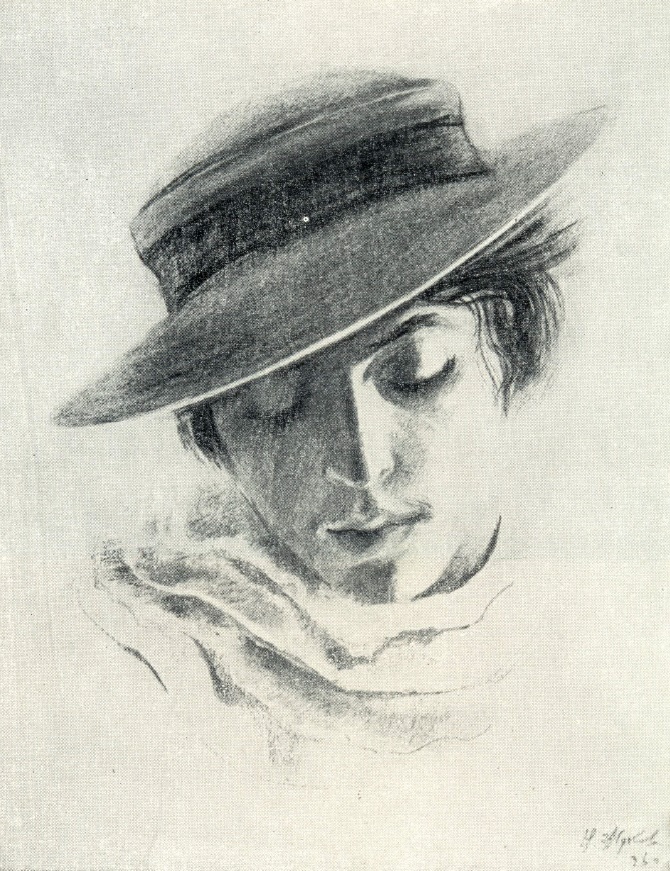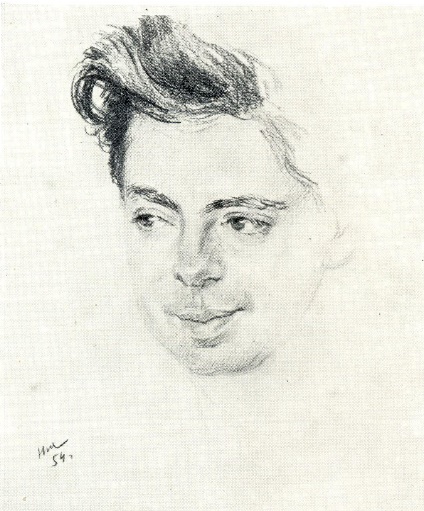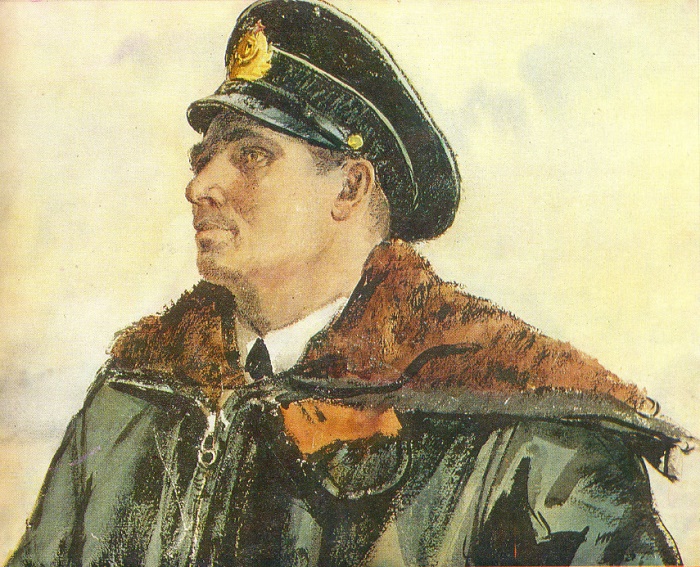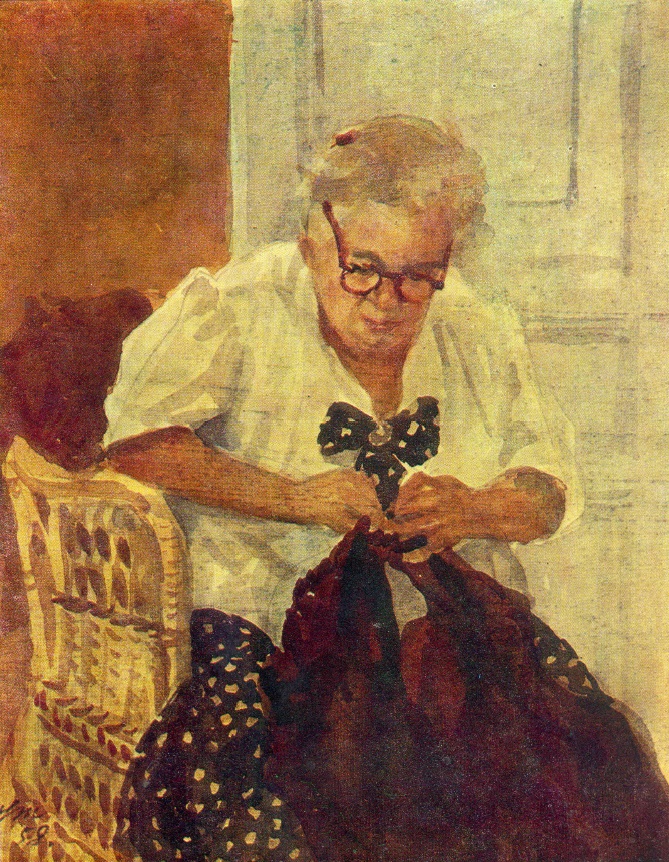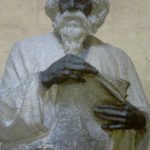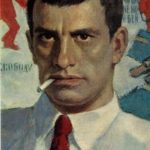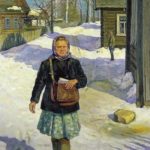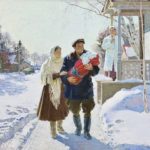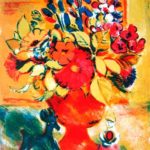Soviet artist Nikolai Zhukov 1908-1973
Soviet artist Nikolai Zhukov (1908-1973) – People’s Artist of the RSFSR (1955), People’s Artist of the USSR (1963), winner of two Stalin Prize of the second degree (1943, 1951), member of the CPSU (b) since 1945, Corresponding Member of the Academy of Arts of the USSR (1949). A large part of the artist’s work is devoted to the life and work of Lenin, Stalin, the Great Patriotic War. He painted beautiful watercolors, children’s portraits. Author of dozens of posters, many of which are marked with the “Grand Prix” at the All-Union and international exhibitions of poster. After the war, the newspaper “Pravda” sent their correspondent Zhukov to The Nuremberg trials, where the International Military Tribunal tried the Nazi war criminals (11/20/45 – 10/01/46). There he made more than 400 drawings.
Nikolai Zhukov was born in 1908 in Moscow. The first seven years he spent in Vyatka, where in 1916 he moved to Yelets. His father was a lawyer. But the roots of Zhukov – a Nizhny Novgorod, Volga merchants. Merchants were the grandfather and great grandfather of the artist. Childhood of the future artist Zhukov coincided with the revolutionary events. 10-year-old Kolya Zhukov, painted on thick paper playing cards, and then his mother, brought them to the market to exchange them for bread and milk. Already in those years all the school knew him as an excellent copier – he could redraw any illustration. Parents wanted Zhukov to become a soldier, but Nikolai wanted to be an artist. His father bought reproductions of paintings by Russian artists for him. By copying them, imitating the great masters, Zhukov learned from them, they were his first teachers.
In 1926, Zhukov went to the Art and Industrial College in Nizhny Novgorod. Learning was not easy, the real professional knowledge was little. And here again, helped reproductions of great artists. Thanks to them, he was able to rise a step above their classmates. Zhukov later wrote: “I preferred to study from invisible managers. They are the wise, their advice was free of errors, they were very patient and unobtrusive. I took reproduction from my favorite graphics Serov, Repin, Ivanov, and they directed me to the right path. Zhukov has finished his education at the Saratov Art School. On its completion in 1930, he was drafted into the army. Zhukov served in the cavalry in the Caucasus at the beginning, and then in Chelyabinsk. After demobilization, he moved to Moscow and began his independent creative activities.
At first Zhukov carried out various orders of book publishers and printers: from designing magazine covers to huge billboards. His work as an artist-designer was appreciated. In 1935, London hosted the contest for the best poster for International Tourism. Nikolay Zhukov sent 5 of his works. The competition was anonymous, ie no one knew before awarding neither the authors of posters, nor from what country works were. And when they began to open the envelopes with the names of the winners, it was found out that four of five works by Soviet artist Nikolai Zhukov won first place. It was truly an amazing fact.
At the end of 1930 Zhukov was engaged in illustrating books of memoirs of Marx and Engels.
Since the beginning of the war, people began to perceive the world differently, they would appear as having a different vision. The peaceful scenery seemed harsh, bleak, nature did not please the eye, and everything presaged trouble. Two first military pictures of Zhukov – “After the declaration of war” and “The front-line village”. The outbreak of war Zhukov met in Belarus. In the first few months, he went to the front. Soon, his drawings have appeared in the Army newspaper of the Kalinin Front, which was called “Crash the enemy.”
The soldiers stood behind him at the time when Zhukov was drawing sketches, and watched him work. To Zhukov it was a school of perfecting artistic skill, because in five-minute sketch, it was necessary to grasp the main thing – the very essence of the depicted. In the first 4 months of his stay at the front Zhukov made more than 100 drawings.
Since 1943, Zhukov became the correspondent of “Pravda”. In the same 1943 Zhukov was appointed artistic director of the studio of Grekov – a large team of martial artists. They constantly visited partisan units, did the illustrations for the upcoming war stories. The end of the war Zhukov met in Vienna in the rank of captain.
After the war, the newspaper “Pravda” sent their correspondent Zhukov to The Nuremberg trials, where the International Military Tribunal tried the Nazi war criminals (11/20/45 – 10/01/46). The artist came to the tribunal in February 1946. NN Zhukov was armed with a large and heavy binoculars with eightfold magnification. The difficulty was that, holding the binoculars continuously from the eye, the artist was “deprived” of the left hand and with the right hand he was supposed to perform many functions – to keep the paper, to get and change the pencil, to follow the headphones through which he could hear the process in Russian language, and, finally, to draw as much as possible, more accurate and faster.
During the 40 days that NN Zhukov had at Nuremberg, he made more than two hundred sketches in this cycle, including all the defendants, advocates, judges and journalists. In the year of the 25th anniversary of the Nuremberg trials Zhukov exhibited in the Soviet Armed Forces Museum 24 additional sheets, which depicted all war criminals. They were made on black paper white pastel. In 1948, NN Zhukov was awarded the title of Corresponding Member of the USSR Academy of Sciences.
In 1951 – the artist was awarded the USSR State Prize for his illustrations for the book of Boris Polevoy “The Story of a Real Man”. In 1955 – awarded the title of People’s Artist of the RSFSR.
In 1962, artists’ studio of Grekov headed by NN Zhukov repaired damaged during the war panorama “Battle of Borodino”, for that all have been awarded a trip to Italy. NN Zhukov was very fond of Italy and after 1962 have been there many times. There were created 260 portraits of members of the Italian resistance, with whom he was familiar. A series of portraits had international repercussions. For this work the artist was awarded the medal of Italian heroes partisans (7 brothers, who were shot by the Gestapo) and kerchief of Italian partisans.
In addition to the portraits from Italy NN Zhukov brought a lot of sketches. They depicted streets, houses, squares, fountains, pedestrians and children. A huge success was the artist’s exhibition in Bologna.
Since 1956, the artist was introduced in the Committee of the Lenin Prize in literature and art, where he worked until 1964. In 1963, Zhukov was awarded the title of People’s Artist of the USSR.
Merit of NN Zhukov in the creation of historical portrait images is great. Since the 1940s, the artist devoted more than 30 years to Leniniana, creating portraits of revolutionary leaders, illustrations to the works of Marx and Engels. He is the author of the well known to all Soviet children badge – Star with the image of Lenin in the center. More than 2.5 thousand drawings were dedicated to Lenin.
After the death of Stalin, Zhukov, the only of the graphic artists, was admitted to the coffin to make sketches. All drawings, except for one, are in private collections.
NN Zhukov – a talented portraitist – created a gallery of beautiful female images. One of them – a portrait of “Nadezhda”, not painted from nature. Wonderful gallery of portraits of women, among which is the portrait of the artist’s wife – Albina Feliksovna (1913-1995). She was reliable friend, helper and inspiration of all his life. After his death she promoted the creative heritage of Zhukov, organized exhibitions of his works in different parts of the country and abroad.
Children’s theme is of great importance for the artist. The first figure relating to this topic, was created in 1933. It was called “Stray”: boy in rags in the pouring rain. New pictures on the theme of childhood, appeared only at the beginning of the war. The battalion, in which NN Zhukov served, stayed in the suburban villages, and the artist painted the local kids, and later appeared series of paintings on the theme of “refugees”: the mother with the children.
In 1943, in the family of NN Zhukov was born first daughter – Natasha. Born later Arina and Andrei became the richest material. The feeling of the artist, combined with a feeling of paternal love, gave an extraordinary result. The work was distinguished by its warmth, lyricism, homey feel. One of the children’s drawings served as a sketch to the creation of the medal “Motherhood.”
Love for children’s theme did not leave the artist during his numerous trips to the home country and abroad. In this series, he created hundreds of sketches of cute kids dressed in national costumes, was shown their individual character, funny and amusing situations, weekdays and holidays. Some of these interesting drawings formed the basis of the book “Children”, which was published in 1962 with a foreword by Sergei Mikhalkov.
In addition to portraits, executed in watercolor, interesting are artist’s landscapes “From a car window”, “Life goes on” and his famous still lifes – gentle “Daisies”, moist, glowing “Roses”, and the forest tale “Lilies of the Valley”. In the bottom corner of his drawings are two familiar letters NZ – Nikolay Zhukov.
At the time of luck, joyful expectation of the future, at the age of 65 years, which in our age seems still very small, he suddenly died September 24, 1973, buried in Moscow at the Novodevichy cemetery.
sources: scanned images
Illustrated album “Painting, Graphics, Sculpture”, Tenth exhibition of works by members of the USSR Academy of Arts. “Fine Arts” Publishing House. Moscow. 1972;
“Nikolai Nikolayevich Zhukov” (illustrated album), Moscow, 1979
Nuremberg process by Soviet artist Nikolai Zhukov:


